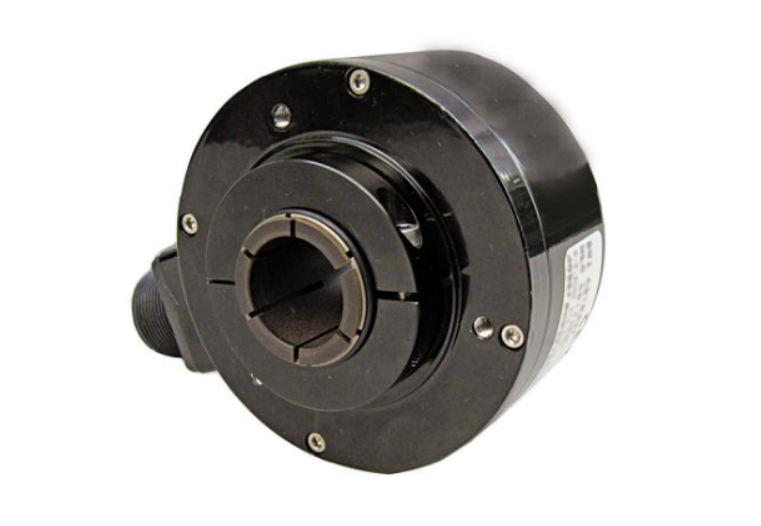Encoders prepare signals (such as bitstreams) or data, convert them into usable communications, transmit and store them as signals. In short, an encoder is a sensing device that provides feedback. Encoders convert motion to electrical signals and can read certain control devices in motion control systems, such as counters or PLCS. The encoder sends feedback signals that can be used to determine position, count, speed, or direction. This information can be used to send function-specific commands. The earliest coders on the market were mainly parsers. A rotary transformer is an electromagnetic sensor, also known as a synchronous rotary transformer. It is a small Angle measuring AC motor, used to measure the axial angular displacement and angular velocity of a rotating object. It consists of a stator and a rotor. As the primary side of the transformer, the stator winding receives the excitation voltage, and the excitation frequency is usually 400.3000 and 5000HZ. As the secondary side of the transformer, the rotor winding obtains the induced voltage by electromagnetic coupling. What is the function of encoder and how to use it?

1. Function of encoder
The motor can get its speed through an encoder. The main principle is that the encoder can obtain the motor revolution according to the motor output pulse number and the statistical pulse number.
An encoder signal (e.g., BitTorrent) is a content distribution protocol. It uses efficient software distribution systems and peer-to-peer technology to share large files (such as movies or TV shows) and allows each user to provide upload services such as network reallocation points. The generic Download server provides download services to users who send download requests. BitTorrent works differently. The distributor or file holder sends the file to one of the users and then forwards the file to the other users. Users forward portions of their files to each other until each user's download is complete. This approach enables the download server to handle multiple large file download requests while using a large amount of bandwidth. Bitstream is known as the "cluster, scatter, cluster" file transfer protocol for bitstream. It was written by programmer Bram Cohen using Python evaluation. It is also an open source proprietary software that can be downloaded and distributed for free. Or devices that prepare data, convert it into usable communication, transmit and store data as signals.
2. The use of encoder
The encoder converts angular or linear displacements into electrical signals. The former is called code disc, the latter is called ruler. Encoders use different types of techniques to create signals, including mechanical, magnetic, resistive, and optical signals. In an optical sensor, the encoder provides feedback based on the interruption of light. The following figure depicts the basic structure of an incremental rotary encoder using optical techniques.
The LED beam passes through the code disc, which has opaque lines (much like spokes on a bicycle wheel). As the encoder axis rotates, the beam from the LED is interrupted by an opaque line on the disc, which is then picked up by the photodetector assembly. This produces a pulse signal: there is a light on the disc = on; No light = out. The signal is sent to a counter or controller, which then sends a signal to produce the desired function.
3. Encoder function
According to the reading mode, common encoders can be divided into contact type and non-contact type; According to the working principle, the encoder can be divided into incremental encoder and absolute encoder. Now let's focus on increments and absolutes:
The incremental encoder converts the displacement into a periodic electrical signal, which is then converted into a counting pulse. The number of pulses represents displacement. Each position of the absolute encoder corresponds to a specific numerical code, so its indication is related only to the start and end of the measurement position, and not to the intermediate process of the measurement.
The encoder? In short, the encoder can generate either incremental or absolute signals. An incremental signal does not mean a specific location, but merely that the location has changed. Absolute encoders, on the other hand, use different positional "words", which means that absolute encoders provide indications of not only positional changes but also absolute positions.
